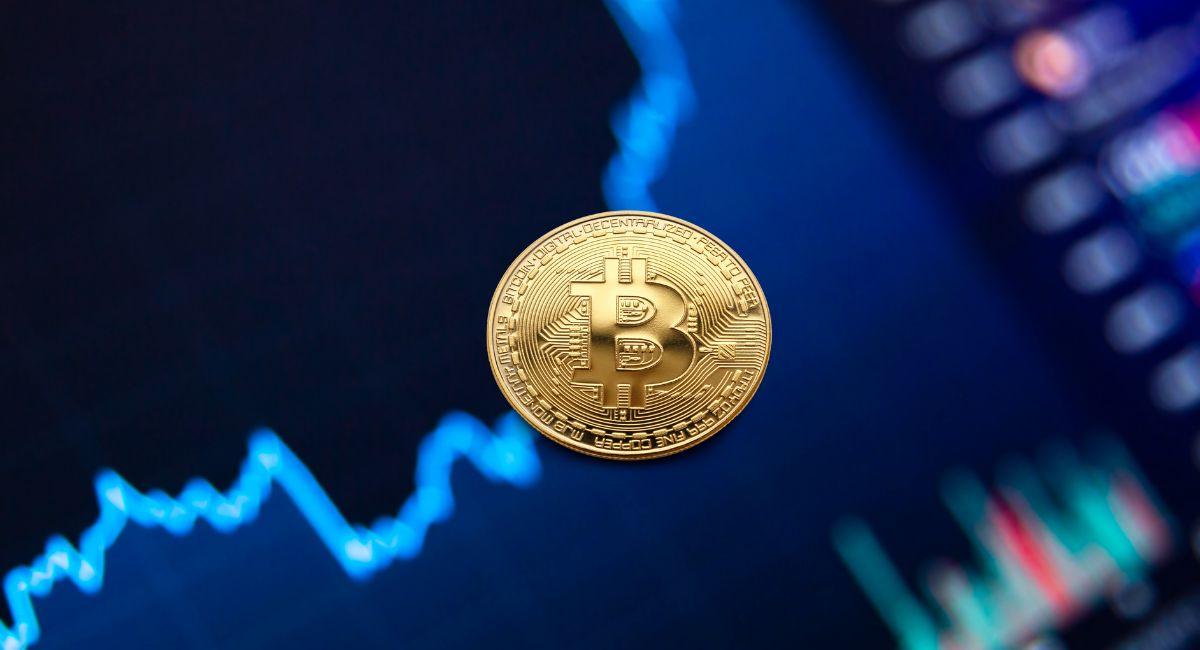Bitcoin Breakout vs. the World: How The Intriguing 2024 Price Surge Impacts Global Markets
The recent surge in Bitcoin’s price sends shockwaves through the global financial system, impacting not only other cryptocurrencies but also traditional assets, economic activity, and investor confidence. Let’s delve into the potential ripple effects of this Bitcoin breakout on a global scale.
A Rising Tide Lifting Crypto Boats?
Bitcoin’s historical price surge is likely to have a domino effect on other cryptocurrencies. Altcoins, which represent digital assets other than Bitcoin, often exhibit a correlation with Bitcoin’s price movements. A significant rise in Bitcoin’s price could trigger a bull run across the broader cryptocurrency market, as investors’ confidence in the asset class surges.
This ripple effect could extend beyond established cryptocurrencies. Increased investor interest in the space could lead to renewed exploration of DeFi (Decentralized Finance) projects, NFTs (Non-Fungible Tokens), and other emerging areas within the crypto ecosystem.
Traditional Markets: Brace for Impact – The Ripple Effects of a Bitcoin Breakout
The potential Bitcoin breakout in 2024, fueled by the halving event and growing institutional adoption, is poised to send shockwaves beyond the crypto sphere. Traditional financial markets, long accustomed to a world dominated by fiat currencies and established asset classes, will likely feel the tremors of this digital revolution. Here’s a deep dive into the potential impact of a Bitcoin breakout on various segments of traditional markets:
1. Increased Volatility and Correlation:
- A More Jittery Market: A significant rise in Bitcoin’s price could lead to increased volatility in traditional markets. Investors, particularly those risk-averse, might become more cautious, leading to quicker sell-offs and heightened sensitivity to economic news. This could result in more frequent market swings and potentially disrupt established investment strategies.
- Blurring the Lines: The Rise of Crypto-Correlation: As Bitcoin gains mainstream acceptance and its market capitalization grows, a correlation between its price movements and traditional asset classes might emerge. This could lead to situations where a surge in Bitcoin’s price influences stock prices, or vice versa. Investors and portfolio managers will need to adapt their strategies to account for this potential interdependence.
2. Flight of Capital and a Reshuffling of Assets:
- A Challenge to Traditional Assets: A Bitcoin breakout could trigger a shift in investor preferences. Some investors might reallocate a portion of their portfolios from traditional assets like stocks and bonds to Bitcoin, seeking higher potential returns and a perceived hedge against inflation. This could lead to a decline in demand for traditional assets, potentially impacting their prices.
- The Rise of Crypto-Backed Instruments: A successful Bitcoin breakout could accelerate the development and adoption of crypto-backed investment vehicles such as Exchange Traded Funds (ETFs). These instruments would allow traditional investors to gain exposure to the cryptocurrency market without directly holding Bitcoin, potentially attracting a wider range of investors and further blurring the lines between traditional and crypto markets.
3. The Banking System: Evolving or Facing Disruption?
- A Disruption to Traditional Lending: The rise of crypto-collateralized loans could challenge the dominance of traditional banks in the lending space. Institutions with significant crypto holdings might bypass traditional loan options and leverage their crypto assets to access liquidity through crypto lending platforms. This could potentially erode the profitability of traditional lending models and force banks to adapt by offering their own crypto-related financial products.
- The Rise of Decentralized Finance (DeFi): A Bitcoin breakout could fuel the growth of DeFi, a nascent ecosystem offering financial services without the need for traditional intermediaries like banks. This could potentially disrupt traditional banking services like lending, borrowing, and wealth management, forcing established financial institutions to innovate and find ways to integrate with or compete against DeFi protocols.
4. Regulatory Scrutiny and Potential Policy Shifts:
- A Wake-up Call for Regulators: A significant Bitcoin breakout would likely attract increased regulatory scrutiny from governments and central banks around the world. Regulators may feel pressure to establish clearer frameworks for cryptocurrency trading, exchange operations, and potentially even price manipulation** to ensure financial stability and protect consumers. This could lead to new regulations that impact various aspects of the cryptocurrency market and its interaction with traditional finance.
- The Potential Rise of Central Bank Digital Currencies (CBDCs): The success of Bitcoin might incentivize central banks to accelerate the development and rollout of their own digital currencies (CBDCs). CBDCs offer central banks greater control over money supply and potentially offer a more stable alternative to private cryptocurrencies. The adoption of CBDCs could further reshape the financial landscape and introduce new dynamics in the competition between traditional and digital currencies.
A Catalyst for Change – The New Era of Coexistence
A Bitcoin breakout in 2024 has the potential to be a watershed moment, not just for the cryptocurrency market but for traditional finance as well. While the exact nature and extent of the impact remain uncertain, one thing is clear: a new era of coexistence is upon us. Traditional financial institutions will need to adapt and innovate to remain relevant in this evolving landscape. The lines between traditional and digital finance will likely continue to blur, creating new opportunities and challenges for investors, institutions, and regulators alike. The future of finance is likely to be a more interconnected and dynamic ecosystem, shaped by the ongoing interplay between established players and the disruptive forces of cryptocurrency innovation.
Also, read – Top 10 Intriguing Reasons Reduced Bitcoin Supply Spark Altcoins: Halving as a Catalyst
A Global Economic Conundrum: The Multifaceted Impact of a Bitcoin Breakout in 2024
The potential breakout of Bitcoin in 2024 presents a global economic conundrum. While some predict a digital revolution, others express concerns about potential disruptions. Here’s a closer look at the multifaceted impact this event could have on the global economic landscape:
1. Potential Benefits:
- Boost for Emerging Economies: Bitcoin adoption is often higher in developing countries where trust in traditional financial institutions is lower. A Bitcoin breakout could provide these economies with greater access to capital and financial services through DeFi applications, potentially accelerating economic growth and inclusion.
- Increased Remittance Efficiency: Cryptocurrencies offer a faster and cheaper way to send and receive money across borders compared to traditional remittance services. A Bitcoin breakout could significantly reduce remittance fees, putting more money directly into the hands of individuals in developing countries.
- Hedge Against Inflation: Bitcoin’s limited supply and growing adoption make it a potential hedge against inflation, particularly in countries with unstable fiat currencies. A breakout could incentivize individuals and institutions to hold Bitcoin as a store of value, potentially mitigating the inflationary effects of traditional monetary policies.
2. Potential Risks:
- Financial Market Instability: A sudden surge in Bitcoin’s price could trigger panic selling in traditional markets, leading to increased volatility and potential asset bubbles. This could disrupt global economic activity and hinder investment in productive sectors.
- Systemic Risk and Contagion: The interconnectedness of financial markets means a crisis in the crypto space could spill over into traditional finance. The failure of a major crypto exchange or a large-scale cyberattack could lead to broader financial instability.
- Uneven Distribution of Benefits: The benefits of a Bitcoin breakout may not be evenly distributed. Developed economies with established financial institutions might be better positioned to adapt and capitalize on new opportunities, while developing economies may face challenges in integrating with the evolving digital financial ecosystem.
3. The Role of Regulators:
- Balancing Innovation and Stability: Regulators will play a crucial role in shaping the future of the global economy in the face of a Bitcoin breakout. They need to strike a delicate balance between fostering innovation in the crypto space while ensuring financial stability and protecting consumers from potential risks.
- Establishing Clear Regulatory Frameworks: The current regulatory landscape surrounding cryptocurrencies is fragmented and uncertain. Clear and consistent regulations will be essential to provide confidence to investors and institutions, promoting responsible innovation and mitigating potential risks associated with a Bitcoin breakout.
- International Collaboration: The global nature of the cryptocurrency market necessitates international cooperation among regulators. Collaborative efforts will be critical to establish a unified approach to regulation, preventing regulatory arbitrage and fostering a stable and healthy global financial ecosystem.
4. The Future of Money:
- Redefining Monetary Policy: A Bitcoin breakout could force central banks to re-evaluate their monetary policies. The limited supply and decentralized nature of Bitcoin challenge traditional models of controlling inflation and managing money supply. Central banks might need to explore new monetary policy tools or even consider issuing their own digital currencies (CBDCs) to compete with Bitcoin and maintain control over the financial system.
A Paradigm Shift – Navigating the Uncharted Territory
A Bitcoin breakout in 2024 could be a paradigm shift for the global economy. While the potential benefits are significant, the risks cannot be ignored. The success of navigating this conundrum rests heavily on the shoulders of regulators and their ability to establish a framework that fosters responsible innovation while safeguarding financial stability. The future of money and the global economic landscape are at stake, and the decisions made today will determine how we navigate this uncharted territory.
Investor Confidence: A Balancing Act in the Face of a Bitcoin Breakout
A potential Bitcoin breakout in 2024 is poised to be a tightrope walk for investor confidence, impacting sentiment across traditional and digital asset classes. Here’s a detailed exploration of the potential effects on various investor groups:
1. Risk-Averse Investors: A Flight to Safety or a Calculated Entry Point?
- Heightened Risk Aversion: For conservative investors, a surging Bitcoin price could trigger a flight to safety. They may perceive the volatility associated with a breakout as a significant risk and choose to allocate their capital towards traditional assets like bonds or defensive stocks. This could potentially dampen overall market sentiment and hinder investment in riskier asset classes.
- A Calculated Entry Point: However, some risk-averse investors might view a Bitcoin breakout as a validation of its long-term potential. They may see this as a calculated entry point**, cautiously allocating a small portion of their portfolio to Bitcoin to gain exposure to the potential upside while maintaining a diversified portfolio.
2. Institutional Investors: A Measured Embrace or a Full-fledged Leap?
- Increased Institutional Adoption: A Bitcoin breakout could accelerate the trend of institutional adoption. Investment firms, pension funds, and asset managers may be more inclined to allocate a portion of their holdings to Bitcoin, legitimizing the asset class and potentially attracting further investment. This could provide much-needed stability and liquidity to the cryptocurrency market.
- A Measured Embrace: However, institutional investors are likely to remain cautious. They may conduct thorough due diligence** and prioritize established crypto platforms with strong track records before committing significant capital. Regulatory uncertainty and concerns about security could still act as deterrents for some institutions.
3. Retail Investors: Euphoria, FOMO, and the Potential for Pitfalls
- Euphoria and FOMO (Fear of Missing Out): A significant Bitcoin price increase could trigger a wave of euphoria and FOMO among retail investors. They may be tempted to jump into the cryptocurrency market without proper research or understanding of the associated risks. This could lead to impulsive investment decisions and potentially significant losses if the market corrects.
- The Need for Investor Education: Investor education will be paramount in mitigating these risks. Regulatory bodies and financial institutions need to work together to provide retail investors with the knowledge and tools needed to make informed investment decisions in the cryptocurrency space.
4. A Reshaping of Investor Expectations:
- A New Risk-Return Paradigm: A Bitcoin breakout could lead to a recalibration of investor expectations regarding risk and return. The potential for high returns associated with Bitcoin might incentivize investors to re-evaluate their traditional risk tolerance levels, potentially leading to a shift towards a more diversified portfolio that includes both traditional and digital assets.
- The Search for the Next Big Thing: A successful Bitcoin breakout could spark a search for the next big thing in the cryptocurrency space. Investors might explore other cryptocurrencies with high growth potential, further fueling innovation and development within the broader blockchain ecosystem.
A Delicate Balancing Act – Fostering Confidence and Mitigating Risks
The impact of a Bitcoin breakout on investor confidence will be a delicate balancing act. While the potential for increased adoption and innovation is undeniable, the risks associated with euphoria and FOMO cannot be ignored. The key lies in fostering investor confidence through education, transparency, and robust regulations. By creating a more informed and responsible investment environment, we can navigate this potential breakout and pave the way for a more stable and inclusive financial future.
A Broader Shift Towards Digital Assets?
The 2024 Bitcoin breakout could be a harbinger of a broader shift towards digital assets. As Bitcoin gains wider acceptance and regulatory frameworks evolve, it could become a more established asset class, attracting a wider range of investors, including institutional players.
This shift could lead to the development of new financial products and services catering to the digital asset space. Additionally, central banks around the world might be compelled to explore the issuance of Central Bank Digital Currencies (CBDCs) to compete with or complement private cryptocurrencies.
The Future Unwritten: A New Era for Global Finance?
The ultimate impact of Bitcoin’s breakout on global markets remains to be seen. It has the potential to reshape the landscape of global finance, influencing traditional asset classes, economic activity, and investor confidence. Whether this ushers in a new era of digital asset dominance or a period of increased volatility depends on how various stakeholders, from regulators to investors, navigate this evolving space. As the story unfolds, one thing is certain: the world is watching Bitcoin with increasing interest, and its future trajectory will undoubtedly have far-reaching consequences.
Stay informed with daily updates from Blockchain Magazine on Google News. Click here to follow us and mark as favorite: [Blockchain Magazine on Google News].
Get Blockchain Insights In Inbox
Stay ahead of the curve with expert analysis and market updates.
latest from tech
Disclaimer: Any post shared by a third-party agency are sponsored and Blockchain Magazine has no views on any such posts. The views and opinions expressed in this post are those of the clients and do not necessarily reflect the official policy or position of Blockchain Magazine. The information provided in this post is for informational purposes only and should not be considered as financial, investment, or professional advice. Blockchain Magazine does not endorse or promote any specific products, services, or companies mentioned in this posts. Readers are encouraged to conduct their own research and consult with a qualified professional before making any financial decisions. The featured image used is just a creative depiction of the title and it does not intend to hurt sentiments of any person or institution. If it hurts anyone sentiments, please do not hesitate to reach out to Blockchain Magazine.

 Bitcoin
Bitcoin  Ethereum
Ethereum  XRP
XRP  Tether
Tether  Solana
Solana  USDC
USDC  Dogecoin
Dogecoin  Cardano
Cardano  Lido Staked Ether
Lido Staked Ether  TRON
TRON  Wrapped Bitcoin
Wrapped Bitcoin  Wrapped stETH
Wrapped stETH  Chainlink
Chainlink  Avalanche
Avalanche  Sui
Sui  Stellar
Stellar  Litecoin
Litecoin  Toncoin
Toncoin  Shiba Inu
Shiba Inu  Hedera
Hedera  LEO Token
LEO Token  USDS
USDS  Hyperliquid
Hyperliquid  WETH
WETH  Polkadot
Polkadot  MANTRA
MANTRA  Bitcoin Cash
Bitcoin Cash  Bitget Token
Bitget Token  Ethena USDe
Ethena USDe  Wrapped eETH
Wrapped eETH  Uniswap
Uniswap  Monero
Monero  NEAR Protocol
NEAR Protocol  Pepe
Pepe  WhiteBIT Coin
WhiteBIT Coin  Aave
Aave  Ondo
Ondo  Bittensor
Bittensor  Aptos
Aptos  Internet Computer
Internet Computer  Dai
Dai  Official Trump
Official Trump  Mantle
Mantle  Ethereum Classic
Ethereum Classic  Tokenize Xchange
Tokenize Xchange  OKB
OKB  Gate
Gate  sUSDS
sUSDS  Coinbase Wrapped BTC
Coinbase Wrapped BTC 




